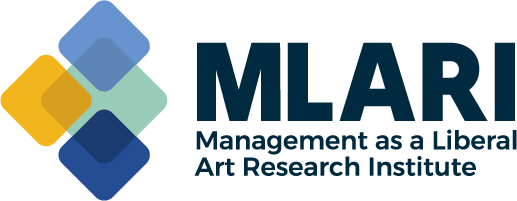Student Activism and MLA: The Importance of Status and Function in Society
PUBLISHED:
How do we find individual freedom, dignity, status and function in a society dominated by institutions that, to many, don’t seem to function effectively?
…it suddenly dawned on me that many of the young Americans now in college and graduate school are searching for an ethic based on personal (if not spiritual) values, rather than on social utility or community mores – what one might call an Ecumenical Ethic. The old ideologies and slogans leave these young adults cold…But there is a passionate groping for personal commitment to a philosophy of life. Above all, a new inner-directedness is all the rage in this group. Peter Drucker, “The Romantic Generation,” Harper’s Magazine, May 1966.
In doing research for a project, I revisited an article Drucker wrote about college students in the 1960s. Titled “The Romantic Generation,” this piece is Drucker’s musing about what was then referred to as “the generation gap.” Why were young people in the 1960s so different from college students in the 1950s, who were much less rebellious? I wanted to share some of Drucker’s insights from this article because many commentators today remark that college students in this era are increasingly rebellious and contentious. References to “wokeness” and “cancel culture” pepper commentaries, as voices argue that college students are intolerant of dissenting opinions and downright hostile toward freedom of speech. Do Drucker’s observations of young adults in the 1960s shed any light on the debates over discourse and student activism?
At the time of Drucker’s article, students were concerned with a number of social justice issues, including the civil rights movement and students’ rights. At the University of California, Berkeley, the Free Speech movement during the 1964-1965 academic year involved a student-led protest against a ban on on-campus political speech and activities. Fueled by the civil rights movement and later protests against the Viet Nam War, the Free Speech movement represented students’ rebellion against 1950s-era anti-Communist restrictions on First Amendment rights of young people. Universities and colleges were believed to be in loco parentis, or “in the place of a parent” with the power to limit young people’s rights for their own safety. Women were subject to curfews, and there were other significant restrictions on students’ private lives. The Free Speech movement at Berkeley was the death knell for in loco parentis on most college campuses, where students are now treated as adults.
But it was the civil rights movement that motivated students throughout the United States to engage in activism, often in ways that endangered their own lives. The Freedom Riders were groups of college students who protested segregation in the South. Students from Northern universities traveled to the Deep South in the summer of 1961 to work with activists from Southern colleges and universities to desegregate public transportation. White students would sit in areas on buses designated for black people, and black students would integrate into white seats. The events were nationally televised. When buses were burned and students beaten in places like Birmingham, Alabama, the whole world watched; in fact, the Soviet Union gleefully used television images of violent reactions to non-violent protests to denigrate capitalism. Then there were the Freedom Schools organized in 1964, the first one of which was in Mississippi. These free schools were designed to educate Southern blacks on their own history and organize them to achieve social, economic, and political equality. Drucker comments on this in his article:
The young people are much closer in their views on civil rights to the abolitionists of a century ago than they are to yesterday’s liberals. The oppression of the Negro is to them a sin rather than a wrong. “We Shall Overcome” has the ring of a gospel hymn rather than that of a New Republic editorial. This explains in large part the tremendous impact the civil rights movement has had on the mood, vision, and worldview of the campus generation. In addition, civil rights has offered scope for individual initiative and effectiveness, something our society otherwise does not readily grant to men or women in their early twenties. There are students, white and coloured, who have gone South to teach in the Freedom Schools. There are the white college girls up North who in considerable numbers venture into the meanest Negro ghettos of the big cities to tutor or counsel, often entirely on their own.
What caught my attention most about this part of Drucker’s discussion is his comment that the civil rights movement gave young people “scope for individual initiative and effectiveness” – In other words, status and function. Drucker rarely wrote about issues of race, gender, or social justice. But when he did, it was always in the context of his larger philosophy of a functioning society of institutions – the very philosophy that drives Management as a Liberal Art. Elsewhere in this article, Drucker sounds a bit like a cranky older person, complaining about the sentimentality of college students and reminiscing about his days as part of his own “romantic generation.” But his point is important: young people need to feel that they have a voice, a place, status and function. If they do not, they will turn on the very institutions that support them (universities and colleges). When Drucker comments that the students of his era are searching for “personal commitment to a philosophy of life” and are “inner-directed,” he is not being cheeky or critical. He is echoing his own young self who found meaning in the writings of the philosopher Kierkegaard. How can young people be part of a functioning society of institutions? Especially when those institutions seem to alienate those who are “inner-directed,” driven by values and morals rather than by the kudos and rewards offered by the outside world? Drucker’s own crisis revolved around the failure of every institution to stave off National Socialism. How could a young man have faith in society, or find meaning as an individual, when hope was seemingly lost? For, Drucker, Kierkegaard’s existentialism was the answer.
Young people in the 1960s faced a similar existential crisis, driven not by Nazis but by a sense of society’s moral failure. Despite the promises of freedom and equality embodied in America’s founding documents, the country still embraced segregation and racial intolerance. The Viet Nam war was evidence of Eisenhower’s “Military-Industrial complex,” a set of powerful institutions that seemed to pull the levers of society. A growing environmental awareness, spawned by Rachel Carson’s book Silent Spring and its revelations about the dangers of DDT, showed young people that industrialization was poisoning the planet. As students in this era looked at the world around them, they saw not just political issues to discuss, but moral failings – as Drucker says, “sin.”
Today’s young people see, in many ways, a moral failure of society in epic proportions. Students are very engaged on social issues. A recent study by BestColleges shows that over 70 percent of today’s students are motivated by social justice issues and are acting on those impulses. Topics that most concern students include racial justice, climate change, gun control, and gender equality. The murder of George Floyd sparked a widespread movement against police violence against Black Americans. Anti-Asian hate crime rose 73 percent in 2020. On November 30th, 2021, a 15-year-old student opened fire on his fellow classmates and teachers with a gun his parents had bought him for Christmas, wounding seven and killing four. As I write this, it is the ninth anniversary of the Sandy Hook Elementary school shooting, where a 20-year-old shot 26 people, including 20 children. Gymnasts abused by Larry Nassar, team doctor for the U.S. Olympic Gymnastics Team, reached a $380 million settlement with U.S. Olympic organizations. Climate change has been linked to a number of extreme events in recent months (https://www.nytimes.com/2021/11/17/climate/climate-change-wildfire-risk.html, https://www.cnn.com/2021/08/21/weather/hurricane-henri-climate-change/index.html). So, yes, the ills of society weigh heavily on young people, and some generations seem to feel this weight more than others.
Drucker concludes his essay with some food for thought:
But a society of big organizations also raises in new and acute form the question of the person. What is his relationship to these new leviathans which are at one and the same time his servants and his master, his opportunity and his restraint, his tool and his environment? How can the individual maintain his integrity and privacy in such a society? Is individual freedom necessarily limited to whatever small air space will be left between the towering organizational skyscrapers? In such a society of big organizations, the need becomes more urgent for new answers to the old questions: “Who am I?” “What am I?” “What should I be?” …For once today’s young-adult fashions may foretell the concerns, and refigure the intellectual landscape, of tomorrow.
I keep coming back to Drucker’s remarks about students needing function and status, and how, in a society of big organizations, the questions about individual meaning loom large. For here, Drucker is telling us that students may be signaling views that others in society share. As a social ecologist, Drucker is looking at student activism as a possible “change that has already happened.” Is society as a whole moving towards more concern for the role that the “new leviathans” play? In other words, how could everyone, not just students, find status and function as large organizations played an increasingly important role in society? If institutions control every aspect of my life, where is the room for individual freedom? Is the “small air space” outside of institutions? Or can we find status and function within organizations (which is key to Management as a Liberal Art)?
I can see how this desire for “integrity,” “privacy” and “individual freedom” play a role in today’s student activism. The Parkland, Florida shootings in 2018 catapulted high school students to the forefront of gun control advocacy. Despair over the killing of George Floyd and many other black men at the hands of police officers sparked the Black Lives Matter protests that were particularly visible in the summer of 2020. Teenagers and young adults are some of the most prominent activists fighting to avert climate change. As was the case in the 1960s, young people point to previous generations’ failure and abdication of responsibility for solving these problems. And, as was the case in the 1960s, the tactics that young people use to protest are not always welcomed by larger society. Southerners viewed the Freedom Riders of 1961 as troublemakers, not moral activists. Attempts to curtail inflammatory presenters on college campuses and protestors shouting down speakers at events in today’s climate look like limitations on freedom of speech. When viewed through the lens of Management as a Liberal Art and social ecology, however, we can see how student activism is perhaps a symptom of a larger problem: how do we find individual freedom, dignity, status and function in a society dominated by institutions that, to many, don’t seem to function effectively? Management as a Liberal Art can help us answer these big questions.





